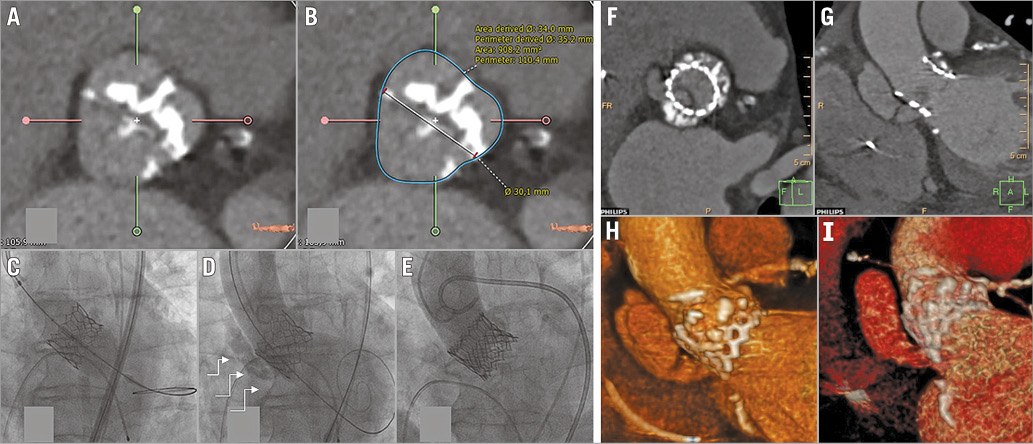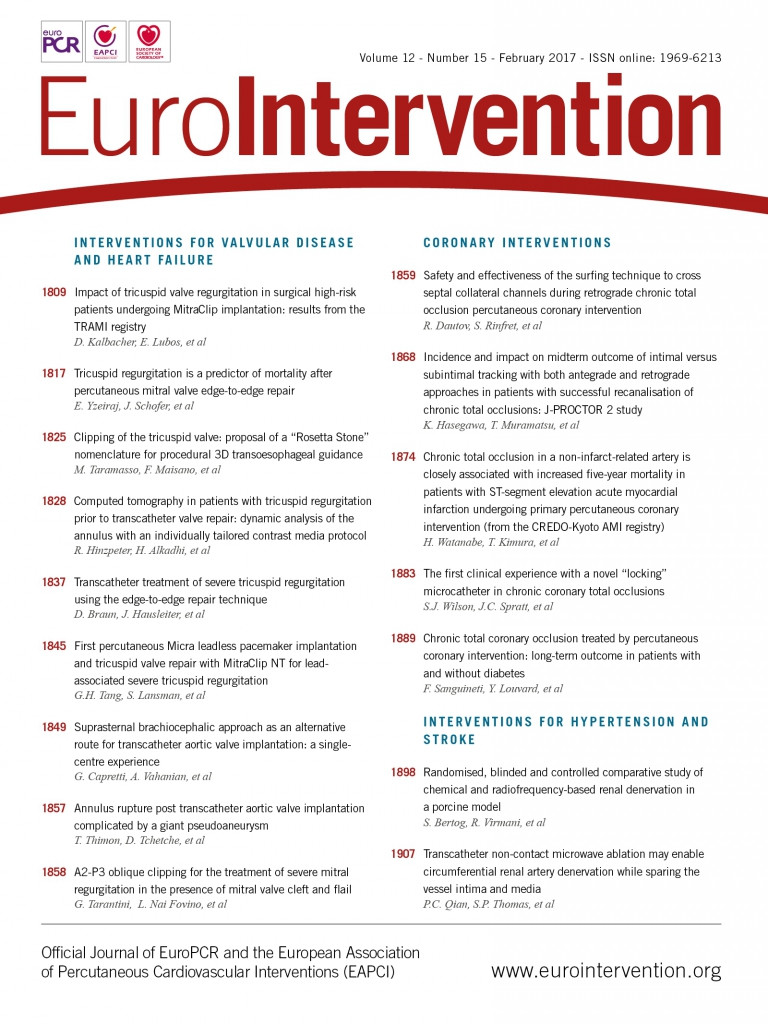

An 82-year-old man with symptomatic aortic stenosis was referred to our institution for transcatheter aortic valve implantation (TAVI), based on his comorbidities (STS score 6.63%). Multislice computed tomography (MSCT) identified a type 1 L/R bicuspid aortic valve. As the annular area-derived mean diameter was 29.1 mm and the intercommissural distance 30.1 mm, a 29 mm Edwards SAPIEN 3 (S3) prosthesis (Edwards Lifesciences, Irvine, CA, USA) was implanted via the transfemoral approach (Panel A-Panel C, Moving image 1). Post valve deployment, an annular rupture was identified by angiography, in the posterior zone of the aortic valve (Panel D, Moving image 2). As a bail-out strategy, pericardial drainage was carried out, quickly combined with the implantation of a second 29 mm S3 before protamine infusion. Haemodynamic recovery was thus obtained, without any obvious residual leak, either on angiography or on transthoracic echocardiography (Panel E, Moving image 3). The in-hospital course was uneventful, except for a complete atrioventricular block requiring a permanent pacemaker on day four. A control MSCT was performed on day 10, which identified good prostheses position with a large pseudoaneurysm of the aortic root located on the right side and extending on 46 mm alongside the aorta (Panel F-Panel H). The optimal management of stable aortic pseudoaneurysm formation in patients considered too frail for surgery is limited to case reports, and should therefore be discussed in a multidisciplinary setting.
The present patient remained haemodynamically stable after initial management and was asymptomatic during the in-hospital course. Considering frailty and surgical risk, a conservative approach was adopted with follow-up by MSCT.
At one-month follow-up, the patient was in NYHA Class I, no events were reported and MSCT confirmed the stability of the pseudoaneurysm (Panel I).
We report here for the first time the constitution of a giant and stable aortic pseudoaneurysm, post TAVI-related annular rupture.
Conflict of interest statement
The authors have no conflicts of interest to declare.
Supplementary data
Moving image 1. First Edwards SAPIEN 3 prosthesis implantation.
Moving image 2. Angiography of the annular rupture.
Moving image 3. Final result.
Supplementary data
To read the full content of this article, please download the PDF.
First Edwards SAPIEN 3 prosthesis implantation.
Angiography of the annular rupture.
Final result.

